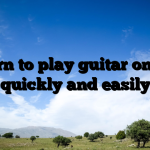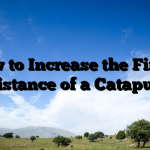dr Robert Sylwester is an educator of educators who has received multiple awards throughout his long career as a master communicator of the impact of brain research on education and learning. His most recent book is The Adolescent Brain: Reaching for Autonomy (Corwin Press, 2007). He is Professor Emeritus of Education at the University of Oregon.
I am honored to interview him today.
Alvaro Fernandez (AF): You recently published a book called The Adolescent Brain: Reaching for Autonomy. What advice would you give to parents and educators of young people?
Robert Sylwester (RS): Biological phenomena always move within domains. For example, leaves fall from trees in autumn, but usually not all at once. Also, developmental changes do not occur in all brains of children and adolescents at the same time and at the same speed. And just as wind or temperature can change the time a leaf might fall, unexpected events can change the time a youngster must confront and respond to given environmental challenges.
The most important thing for adults is to carefully monitor an adolescent’s interests and abilities, and to build in challenges that propel maturation at a reasonable level. If you push too fast, you’ll end up with a stressed-out youth. If you don’t challenge enough, you’ll end up with a bored youth. There is no magic formula to get this just right. This means, for example, that we celebrate the abilities of artists and athletes that go beyond typical human abilities, and we create legal sanctions for those whose behavior falls short of culturally acceptable levels. Most human behavior is, to a large extent, personally chosen and performed. We can easily observe this broad spectrum in such phenomena as political discourse and religious belief or practice. Adolescents strive for autonomous adulthood by gradually discovering their interests and abilities and discovering what is biologically possible and culturally appropriate. They adjust their lives to wherever they feel most comfortable within the wonderful array of possible and appropriate realms that exist.
Young people take risks, there is no doubt about that. Finally, if you want to function within a space, you need to find its outer positive and negative boundaries. Speed limits and other regulations are showing the way, but teens (and adults) still tend to get close to the limits — and maybe just a little beyond.
In short, parents and educators need to pay attention to where the youngster’s interests and skills lie and approach them with experiences that will allow them to move forward.
Alvaro Fernandez (AF): I think that in an emerging field like cognitive science, we need to start clarifying the language that we use. Can you define some words like learning, education, brain development and cognition?
Robert Sylwester (RS): Sure.
LEARNING: Most organisms begin life with most or all of the processing systems and information they need to survive. Humans are a notable exception in that an adult-sized brain is considerably larger than a mother’s birth canal. So we’re born with an immature 1-pound brain that develops additional mass and capabilities during its 20-year developmental trajectory after birth. Parenting, mentoring, teaching, and mass media are examples of the cultural systems that humans have developed to help young people acquire the knowledge and skills they need to survive and thrive in complex environments. Learning is one of our main activities, even if we are often not aware of it.
EDUCATION: Education, like the culture it subsumes, is a conservative phenomenon. Science and technology are evolving rapidly, but education is not. So if schools often resemble the schools of 50 years ago, that shouldn’t come as a surprise. Parents remember their school experiences and, having survived them, are usually suspicious of educators who experiment with their children. This partly explains why schools have not taken into account many of the recent developments in neuroscience and cognitive psychology.
BRAIN DEVELOPMENT: Infant brain development focuses on systems that enable children to recognize and remember the dynamics of environmental challenges—challenges that caring adults will solve for them. The development of the adolescent brain is more focused on the development of the frontal lobe, the systems that allow us to respond appropriately and autonomously to the challenges we face.
INSIGHT: Every experience alters the organization of our brain at some level, so our brain’s processing networks are constantly changing throughout our lives. This process is known as brain plasticity. For example, since my brain has adapted to my switch from the typewriter to the computer, it would now be difficult (but not impossible) for me to type on a typewriter again. Now, cognition is linked to other concepts: emotion is the processing system that tells us how important something is; Attention draws us to what is important and away from the unimportant; Problem solving determines how we react, based in part on our memory of previous similar experiences; and the behavior carries out the decision. The general term cognition encompasses these different processes.
AF: Prof. Sylwester, thank you very much for your great information and advice.
RS: Gladly.
Copyright (c) 2008 Sharp Brains
Thanks to Alvaro Fernandez | #Parent #Educator #Learning #Teenager #Brain


